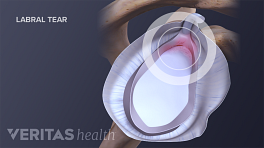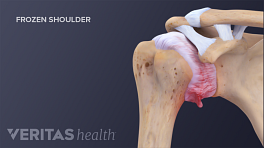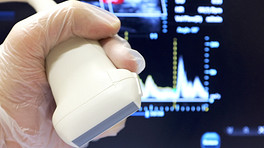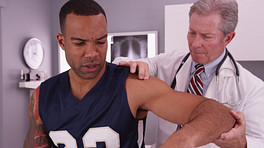Treatment for a dislocated shoulder begins with reduction, which is the medical term for shifting the shoulder joint back into place. When possible, patients should wait and have this done by a medical professional.
To perform the reductions, a physician will choose one of several possible reduction techniques, depending on the nature of the dislocation. Some techniques may require a sedative and/or assistance, while others do not. Most reduction techniques take no longer than 10 to 15 minutes.
Once the shoulder is back in place, there should be an immediate relief from pain. However, it is important for patients to follow treatment recommendations, since the risk for another dislocation is high after an initial one occurs—particularly for young people. Studies indicate that the risk of recurrence for patients younger than 20 is 70 to 90%. 1 Polyzois I, Dattani R, Gupta R, Levy O, Narvani AA. Traumatic First Time Shoulder Dislocation: Surgery vs Non-Operative Treatment. Arch Bone Jt Surg. 2016;4(2):104-8.
Treatment usually begins with nonsurgical methods, such as wearing a sling and physical therapy. Surgery may be considered if shoulder instability persists.
In This Article:
Nonsurgical Treatment for Shoulder Dislocations
The physician may recommend one or more of the following nonsurgical treatment options:
- Immobilization. Immediately after reduction, the arm should be immobilized in a sling for 1 to 3 weeks to prevent shoulder movement. Range of motion exercises for the hand and wrist can still be done at this time.
- Ice. Ice can be applied 3 to 4 times each day to the injured shoulder. Doing so can help reduce pain and swelling. Wrap the ice pack in a cloth or towel to prevent ice burn.
- Anti-inflammatory medications. Non-steroidal anti-inflammatory medications such as ibuprofen or aspirin may also help decrease inflammation and pain.
- Physical rehabilitation. A physician or physical therapist normally creates a rehabilitation program catered toward the patient’s needs and goals. This is a critical part of the recovery process that helps restore shoulder function and movement by strengthening the muscles surrounding the shoulder joint.
A possible risk of nonsurgical treatment is the potential for recurring dislocations or shoulder instability. If this develops, physicians will recommend surgical treatment. There are several surgical procedures that can stabilize shoulder instability.
- 1 Polyzois I, Dattani R, Gupta R, Levy O, Narvani AA. Traumatic First Time Shoulder Dislocation: Surgery vs Non-Operative Treatment. Arch Bone Jt Surg. 2016;4(2):104-8.











